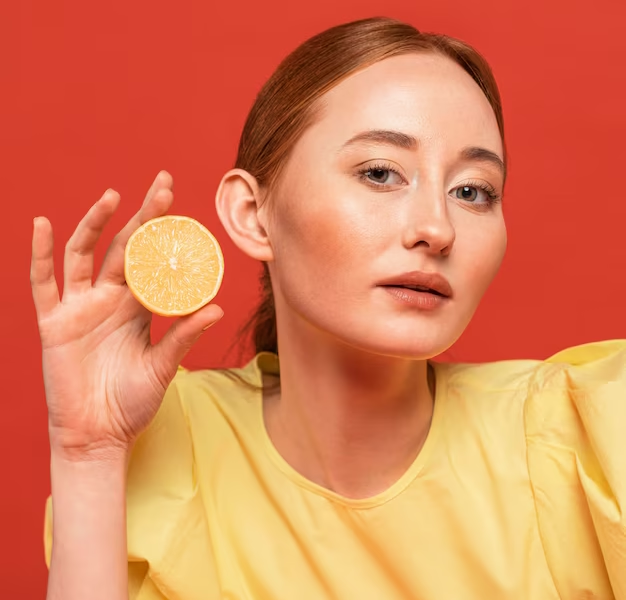Dark spots on the face, medically known as hyperpigmentation, are a common cosmetic concern affecting people of all ages. These spots, caused by excess melanin production, can result from sun exposure, aging, hormonal changes, or acne scars. Fortunately, natural remedies have long been used to address this issue. Among these, Tang drink mix combined with lemon juice has gained attention for its exfoliating and brightening properties. Let’s explore how these ingredients can help restore your skin’s natural glow.
What Causes Dark Spots on the Face?
Dark spots appear due to hyperactive melanocytes, the skin cells responsible for producing melanin, the pigment that determines skin color. The primary triggers for dark spots include:
- Sun Exposure: Prolonged exposure to UV rays can lead to sunspots or freckles, particularly on the face.
- Hormonal Changes: Pregnancy, menopause, or hormonal therapies can cause conditions like melasma, marked by darker patches on the skin.
- Acne Scars: Post-inflammatory hyperpigmentation (PIH) is the result of skin trauma, such as acne, healing and leaving behind dark marks.
- Aging: Over time, the skin loses elasticity and develops age spots due to cumulative sun damage.
How Can Natural Remedies Help?
While cosmetic procedures like chemical peels and laser treatments offer quick results, natural remedies provide a gentler, cost-effective solution. Ingredients such as lemon juice, rich in Vitamin C and citric acid, work as natural skin lighteners. Adding Tang to the mix might sound unconventional, but its composition enhances the exfoliating and brightening process.
The Science Behind Lemon Juice
Lemon juice has been hailed for its skincare benefits for centuries. The key properties of lemon juice that make it effective for removing dark spots include:
- Vitamin C: A powerful antioxidant that reduces melanin production, helping fade dark spots. Vitamin C also promotes collagen production, improving skin elasticity.
- Citric Acid: This natural acid gently exfoliates the skin, removing dead cells and unveiling brighter, healthier skin underneath.
- Skin Brightening: Regular application of lemon juice may gradually lighten dark areas and even out skin tone.
However, lemon juice can be harsh on sensitive skin due to its high acidity. Therefore, diluting it or mixing it with other ingredients is crucial to prevent irritation.
What Is Tang, and Why Use It?
Tang, a powdered drink mix often associated with refreshing beverages, contains citric acid and ascorbic acid (Vitamin C). While not a traditional skincare ingredient, its acidic nature allows for gentle exfoliation of dead skin cells, much like a mild fruit acid.
Advantages of Using Tang in Skincare
- Exfoliating Properties: Citric acid helps unclog pores and remove dull skin.
- Vitamin C Content: It boosts the effectiveness of the remedy when paired with lemon juice.
- Convenience: Tang is affordable and easy to access, making it an appealing DIY option for skin care.
How to Prepare and Use the Tang-Lemon Juice Mixture
Here’s a step-by-step guide to prepare and apply this unique dark spot remedy:
Ingredients:
- 1 tablespoon of Tang powder
- 1 tablespoon of freshly squeezed lemon juice
- 1 teaspoon of water (optional, to dilute for sensitive skin)
Instructions:
- Mix: Combine the Tang powder and lemon juice in a small bowl. If the mixture feels too strong, add a teaspoon of water for dilution.
- Cleanse: Thoroughly cleanse your face with a gentle face wash and pat dry.
- Apply: Use a cotton ball or your fingers to apply the mixture directly to the dark spots. Avoid applying it to unaffected areas, as the acidity may cause dryness.
- Leave It On: Allow the mixture to sit on your skin for 10–15 minutes.
- Rinse Off: Wash your face with lukewarm water, ensuring no residue remains. Follow with a moisturizer to prevent dryness.
Frequency:
Apply this treatment 2–3 times a week. Overuse can irritate the skin, so it’s essential to allow your skin time to heal and adapt between applications.
Precautions and Tips for Safe Use
While the Tang-lemon juice mixture offers potential benefits, keep the following precautions in mind:
- Patch Test: Test the mixture on a small area of skin before full application to check for allergic reactions.
- Sun Protection: Lemon juice increases photosensitivity, making your skin more prone to sunburn. Always use sunscreen before going outdoors.
- Avoid Open Wounds: Do not apply the mixture to cuts, open acne sores, or sensitive areas.
- Moisturize: Counteract the drying effects of citric acid by following up with a hydrating moisturizer.
Additional Natural Remedies for Dark Spots
If the Tang-lemon juice combination doesn’t suit you, here are other alternatives:
- Aloe Vera Gel: Known for its soothing properties, aloe vera reduces inflammation and promotes healing.
- Potato Juice: The enzymes in potatoes may lighten hyperpigmented areas over time.
- Apple Cider Vinegar: A natural astringent that balances the skin’s pH while fading discoloration.
- Turmeric Paste: This anti-inflammatory spice reduces redness and helps lighten spots.
Conclusion
The combination of Tang and lemon juice offers a simple and budget-friendly solution for reducing dark spots on the face. By leveraging the exfoliating and brightening properties of citric acid and Vitamin C, this remedy may help fade pigmentation over time. However, consistent use and adherence to safety precautions, such as avoiding sun exposure and moisturizing, are essential for achieving optimal results.
While natural treatments can be effective, keep in mind that results vary depending on skin type and the severity of the dark spots. For persistent hyperpigmentation, consulting a dermatologist for professional advice is always a good idea.










